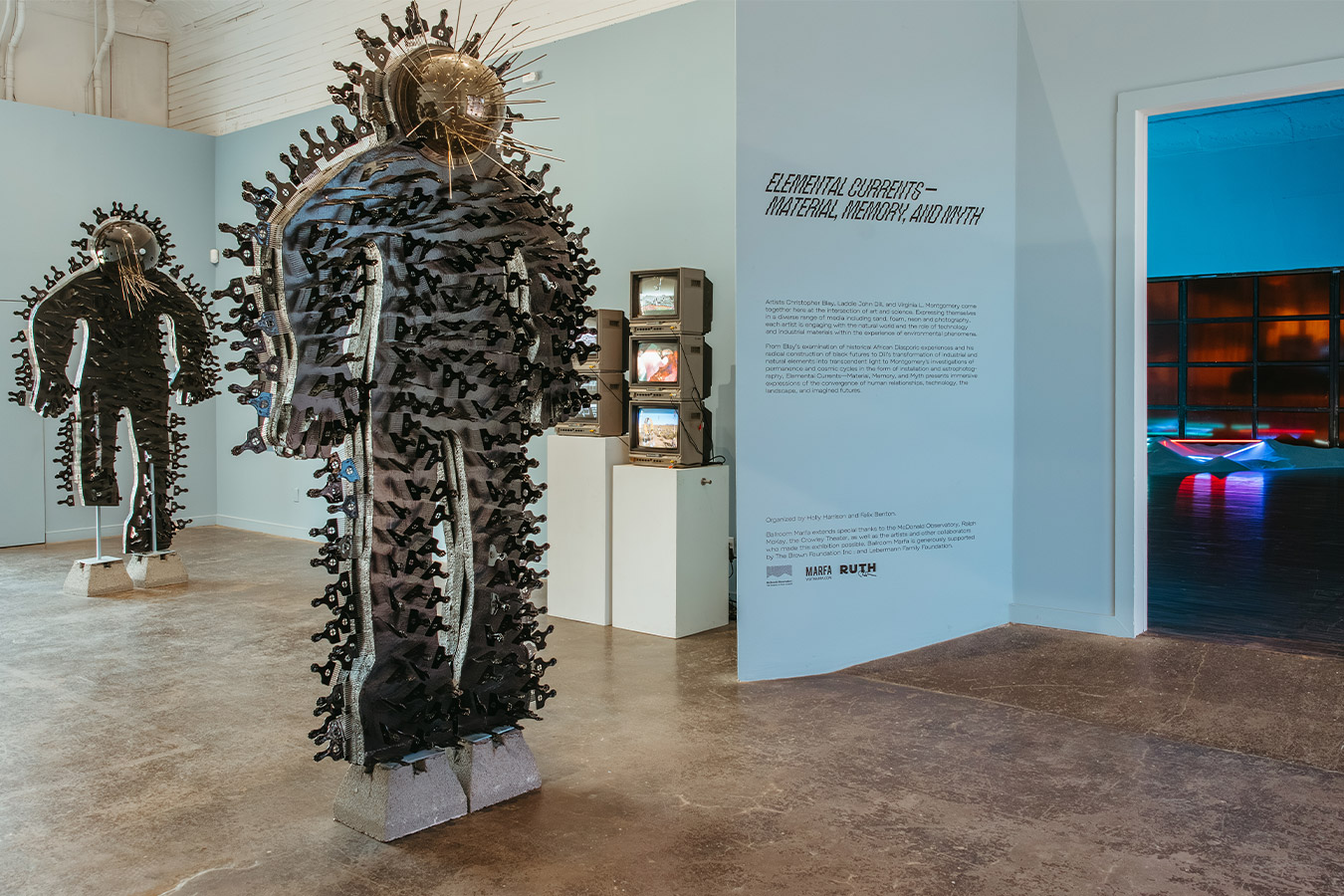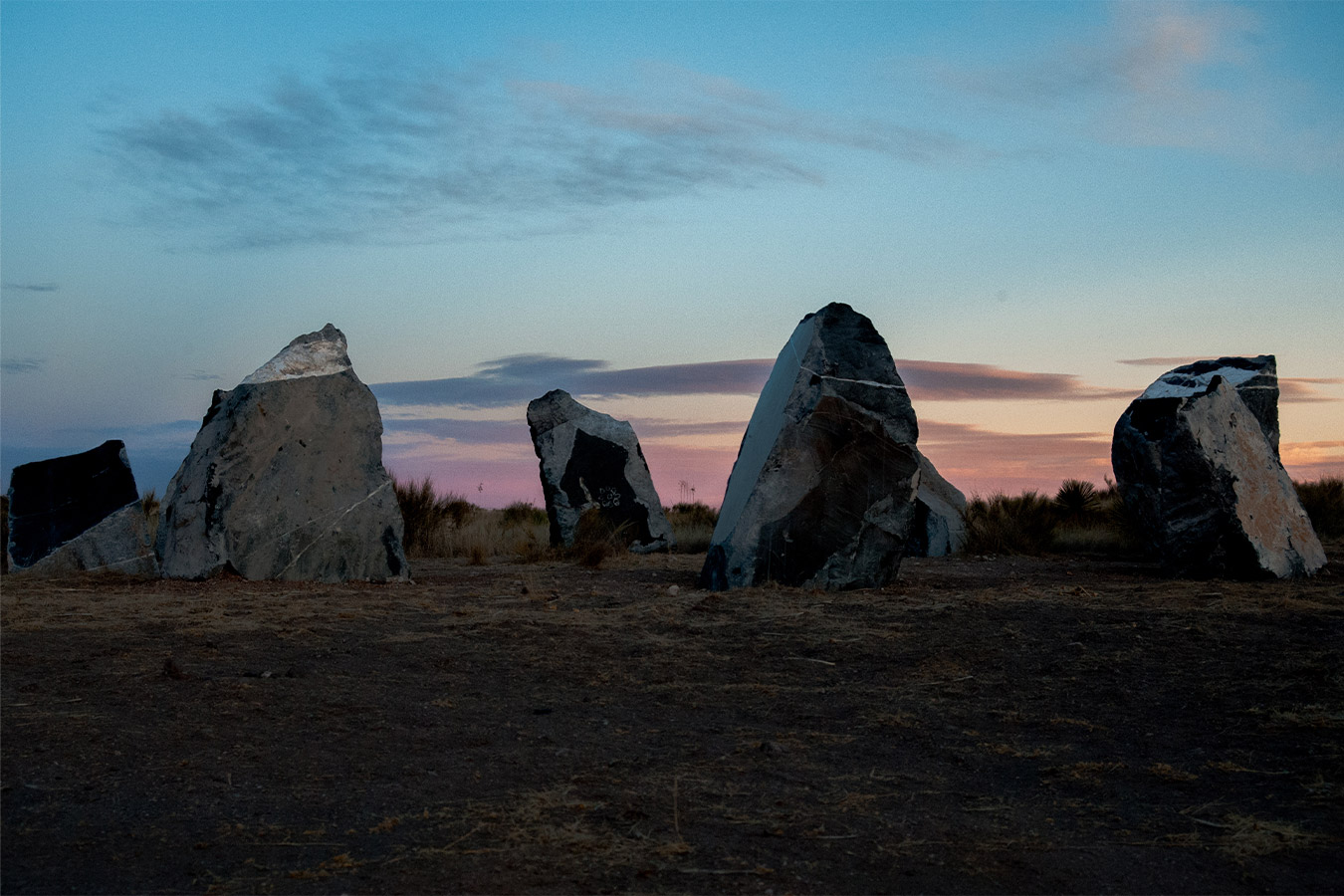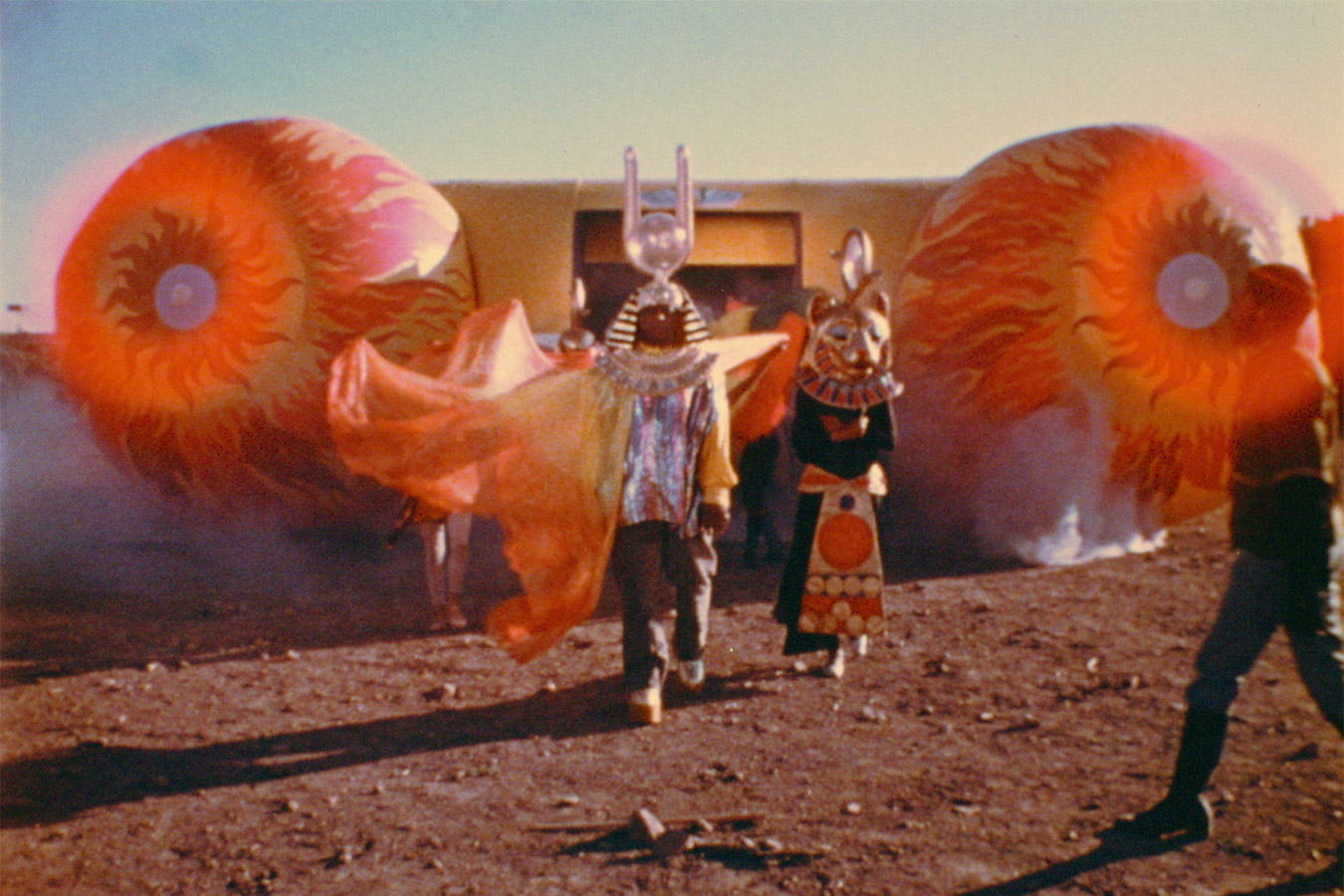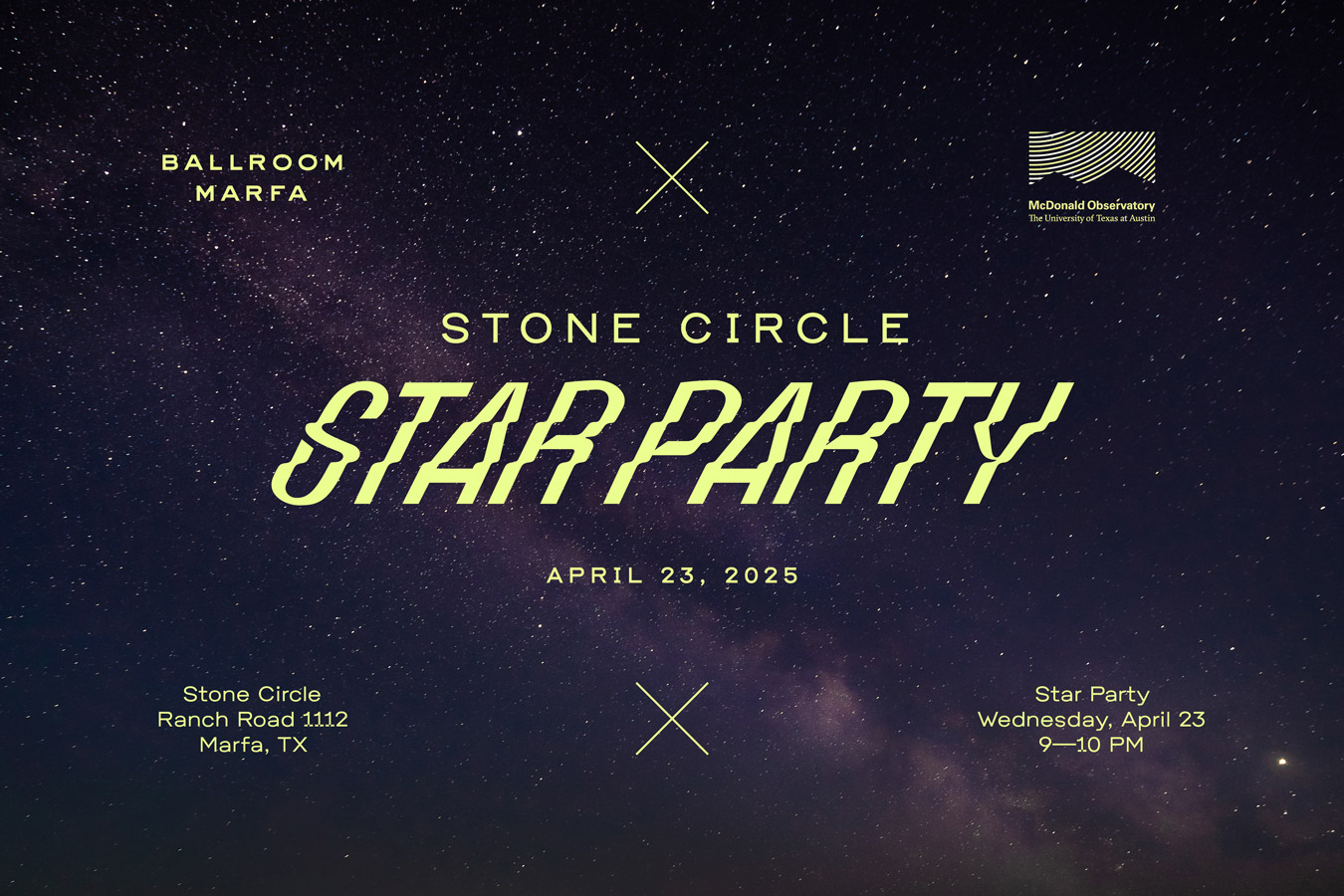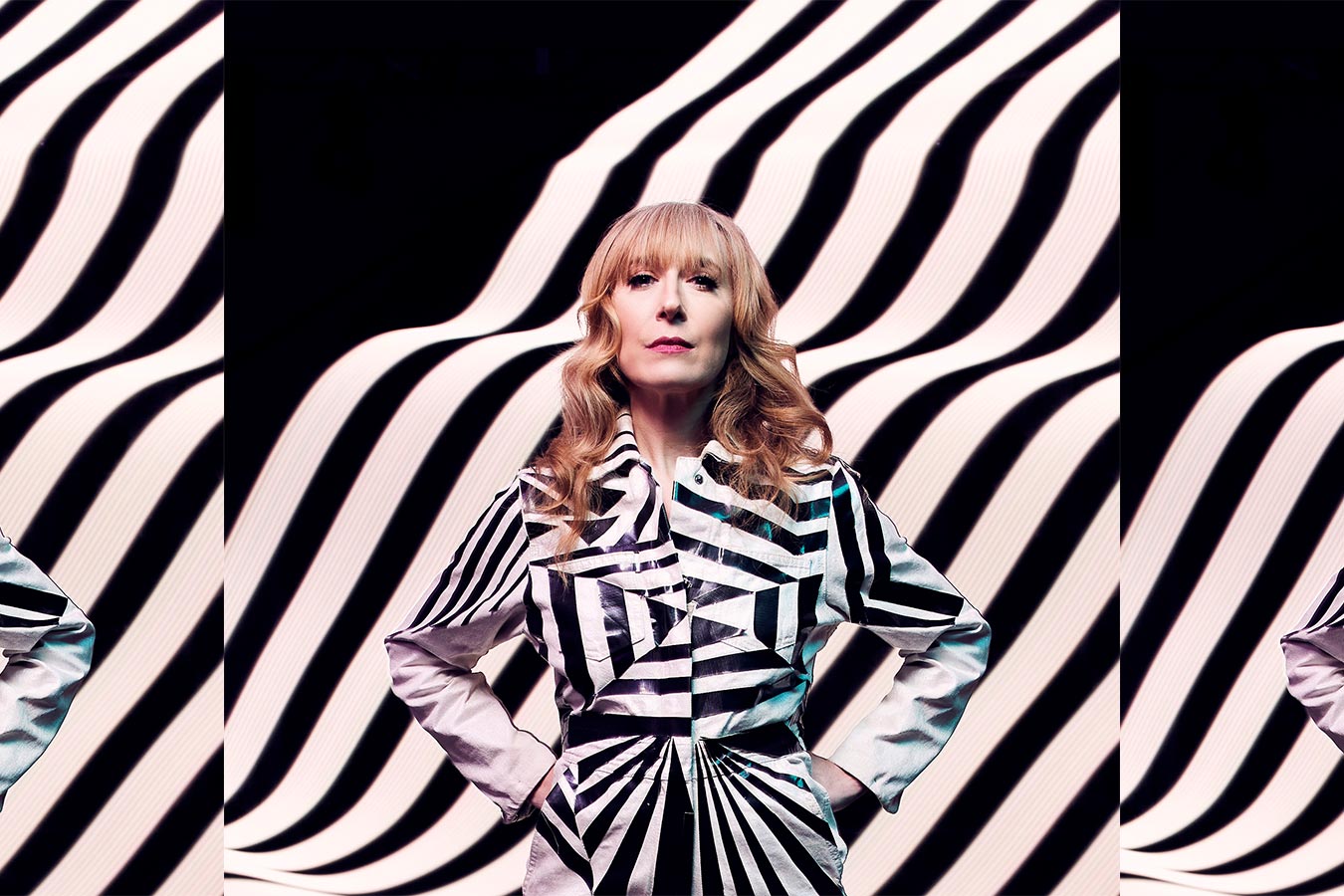Ballroom Marfa
- 7 Apr
- Closed
- Admission
- Free

- This event has passed.
Two Face—Aaron Curry & Thomas Houseago
29 May 2009 – 13 Dec 2009
Free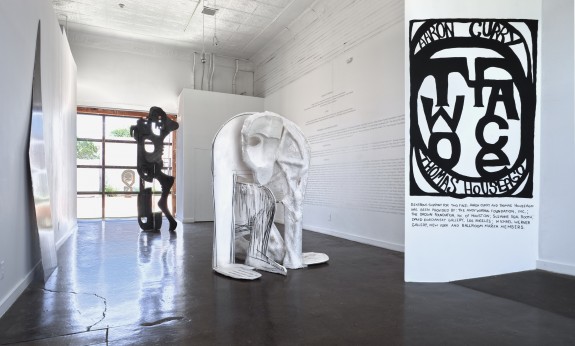
Exhibition
Aaron Curry | Thomas Houseago
Two Face was an exhibition presented by Ballroom Marfa artists-in-residence Aaron Curry and Thomas Houseago. Based in Los Angeles, Curry and Houseago are sculptors was the culmination of a month-long joint residency, supporting the intense and generative dialogue the artists have established over the years. Two Face, which included new and recent sculptures by Curry and Houseago, invoked a Janus-faced approach to form and process: simultaneously looking to the past and the future.
The sculptures of Aaron Curry (b. 1972 San Antonio, TX) and Thomas Houseago (b. 1972 Leeds, England) are monuments for the twenty-first century — with contemporary pop culture given gravitas by the presence of the historical avant-garde. Foregoing an ironic appropriation and the rapid-fire referencing that has come to define their generation of artists, Curry and Houseago’s works are the aftermath of a violent, instantaneous fusion between relics of our cultural past and the aesthetic sensibilities of the now.
In Curry’s sculptures are the traces of Picasso’s disembodied forms, as well as his watershed disruption of spatial representation. The flattened anthropomorphic forms of Miro and Tanguy have survived too, and they’ve evolved with the times, sporting anodized aluminum surfaces, high gloss auto finishes, and free form spray sketch, in palettes ranging from the solemn to the scintillating.
The plays between solid and planar forms are rife in Curry’s works, evoking in part the legacy of Jean Arp pushed into a more realized third dimension. The sustained tension between two-dimensional media and the sculptural is the same force that keeps Curry’s historical and contemporary pop engaged in the present — the same two-faced approach that allows a commitment to abstraction at the same time as figuration.
In Houseago’s deconstructed sculptures, there’s an instantly recognizable grandeur as figures tower in classical and primordial poses. They are formed of materials with a long history in sculpture — wood, plaster and metal — and the modern manifestations of these as plywood and rebar is a marker of the insistent present. The shifts between the illusion of solidity and the actuality of the hollow — the steady flicker between the classical and the postmodern — that give Houseago’s sculptures a solitary resolve.
The mark of Houseago’s hand is present in the uneven plaster surfaces, the drips of slurry on pedestals and the slightly unruly edges of his jigsaw cuts. While they are expressive, Houseago’s pieces also expose the functional details of his process, like the reveal of hessian and rebar that form the skeleton and innermost tissue of his sculpted forms. Conceptually, they recall the challenges of Boccioni, to show space as a molding device and something to be molded. But they evoke Giacometti’s emaciated figures too, and the drama of Rodin’s poses. The contrasts in aesthetic influences within each piece enact a subtle non sequitur as they undermine the expectations of the viewer.
